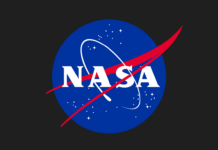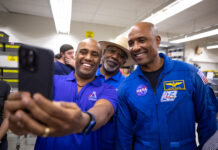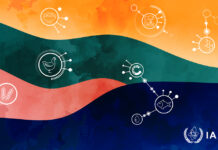Curiosity Navigation: Discovering Mars with NASA’s Rover
The Curiosity Rover, developed by NASA, is a robotic marvel exploring the Martian surface, gathering invaluable data that continues to shape our understanding of the Red Planet. This article delves into the latest mission updates and scientific pursuits of Curiosity, offering insights into its remarkable journey and the technological prowess that powers it.
Mission Overview
Curiosity’s mission is an integral part of NASA’s Mars Science Laboratory project, aimed at investigating the planet’s climate and geology. The rover’s primary goal is to determine if Mars ever had the environmental conditions to support microbial life. Equipped with a suite of scientific instruments, Curiosity analyzes samples scooped from the Martian surface to detect organic compounds and other chemical elements critical for life.
For those interested in the mission’s specifics, NASA provides a comprehensive overview on their website. This includes the rover’s location map, which tracks its daily movements across the Martian terrain, and regular mission updates that offer a behind-the-scenes look at Curiosity’s operations.
Scientific Exploration
Curiosity’s journey is not just about moving across the Martian landscape; it’s a sophisticated scientific expedition. The rover is equipped with a variety of instruments designed to study the planet’s surface and atmosphere. These instruments include the ChemCam, which uses laser-induced breakdown spectroscopy to analyze the composition of rocks and soil from a distance, and the Sample Analysis at Mars (SAM) suite, which searches for organic molecules.
Another crucial aspect of Curiosity’s mission is to capture high-resolution images and videos of Mars, providing scientists with a visual understanding of the planet’s geological features. These multimedia resources are available for public viewing, allowing enthusiasts to explore Mars from the comfort of their homes.
Mars Missions: A Broader Perspective
Curiosity is part of NASA’s broader Mars exploration strategy, which includes other missions like the Mars 2020 Perseverance Rover, MAVEN (Mars Atmosphere and Volatile Evolution), and the Mars Reconnaissance Orbiter. Each mission has its unique objectives and capabilities, contributing to a holistic understanding of Mars.
The Mars Sample Return mission, for instance, aims to bring Martian soil samples back to Earth for detailed analysis, potentially unlocking more secrets about the planet’s history and potential for life. The Perseverance Rover, which landed on Mars in 2021, is tasked with seeking signs of ancient life and collecting samples for future return missions.
The Solar System: Expanding Our Horizons
While Mars is a focal point for NASA’s exploration efforts, it is just one part of the extensive solar system that the agency studies. From the scorching surface of Mercury to the icy moons of Jupiter, NASA’s missions aim to unravel the mysteries of our cosmic neighborhood.
For those interested in learning more about the solar system, NASA offers a wealth of resources covering each planet and celestial body. This includes information about the Sun, Earth’s closest neighbor, and the outer reaches of our solar system, such as the Kuiper Belt and the Oort Cloud.
Curiosity’s Latest Adventure: Sols 4359-4361
The latest update from the Curiosity Rover highlights its journey through Sols 4359 to 4361, a period marked by successful navigation and scientific exploration. Curiosity has been exploring the Gediz Vallis, a region known for its intriguing geological formations.
The rover’s recent drive was a success, allowing it to explore new targets such as "Buttress Tree," "Forester Pass," "Crater Mountain," "Mahogany Creek," and "Filly Lake." These names, designated by the geology team, evoke the sense of a travel guide, highlighting the scientific significance of each location.
In addition to geological studies, Curiosity’s environmental group has been observing the Martian atmosphere, monitoring changes in its composition. Instruments like the Alpha Particle X-Ray Spectrometer (APXS) and ChemCam play a crucial role in these analyses, providing data on the presence of dust and other atmospheric phenomena.
A Virtual Road Trip with Curiosity
For those following Curiosity’s journey, the rover’s exploration of Mars can feel like a virtual road trip. The diverse landscape of Gediz Vallis offers a range of geological features, from polygonal fractures to intricate rock structures, each telling a story of Mars’ ancient past.
Curiosity’s "workspace," the area directly in front of the rover, is a focal point for scientific investigations. It includes contact science targets like "Mahogany Creek" and "Forester Pass," where the rover uses its robotic arm to conduct close-up studies.
After a day of exploration, Curiosity’s environmental team takes a moment to observe the Martian atmosphere. The rover’s weather station, known as REMS (Rover Environmental Monitoring Station), provides real-time data on temperature, humidity, and atmospheric pressure, essential for understanding Mars’ climate.
Continuing the Journey
As Curiosity continues its mission, it promises many more discoveries on the horizon. Each new sol (Martian day) brings fresh opportunities to unlock the mysteries of Mars, advancing our knowledge and inspiring future exploration missions.
Curiosity’s journey is a testament to human ingenuity and the relentless pursuit of knowledge. It serves as a reminder of the vastness of our universe and the potential for discovery that lies beyond our world.
For more detailed information and updates on Curiosity’s mission, visit NASA’s official website. Here, you’ll find a treasure trove of resources, including images, videos, and scientific data, all designed to educate and inspire the next generation of explorers.
Exploring Mars: A Collaborative Effort
NASA’s exploration of Mars is a collaborative effort, involving scientists, engineers, and researchers from around the world. Each mission contributes to a collective understanding of the planet, paving the way for future human exploration.
The data collected by Curiosity and its counterparts informs the development of new technologies and strategies for exploring Mars. This includes advancements in rover design, autonomous navigation systems, and life-support technologies, all crucial for future manned missions to Mars.
In conclusion, Curiosity’s mission is a remarkable journey of discovery, driven by cutting-edge technology and a passion for exploration. It embodies the spirit of scientific inquiry, pushing the boundaries of what we know and seeking answers to some of the most profound questions about our universe. As we continue to explore Mars and beyond, each new discovery brings us closer to understanding our place in the cosmos.
For more Information, Refer to this article.

































